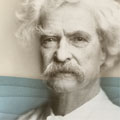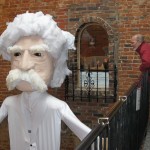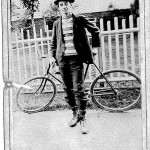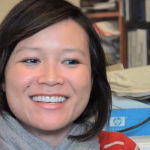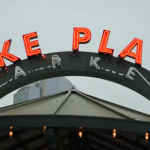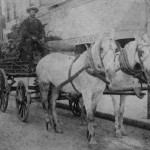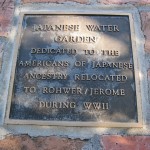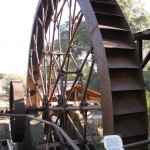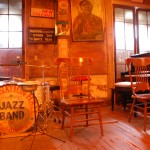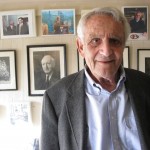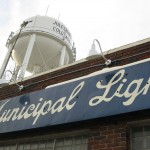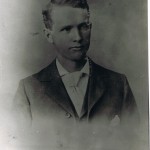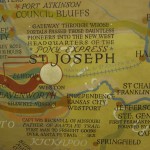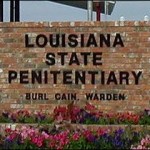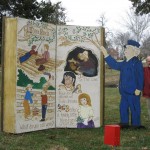As we follow Mark Twain’s path in 1853 north by stagecoach from Springfield, Illinois, I’m reminded of how Twain’s vision of his next stop, Chicago, changed and didn’t change.
Twain insisted that a visitor always found Chicago a novelty, completely unlike the Chicago from a prior visit: “It is hopeless for the occasional visitor to try to keep up with Chicago—she outgrows his prophecies faster than he can make them.” The small town of Chicago (1850 census: 29,963) morphed into a major metropolis in less than two generations (1890 census: 1,099,850).
Despite Chicago’s rapid growth, the city remained an inconsequential place to Twain. In August 1853, Chicago was a train-stop town for Twain on the way to someplace else. After a 26-hour layover in Chicago he hopped a train for the next leg of his trip east to New York.
Chicago’s population boomed later in the century; the city started in 1890 its 94-year run as the nation’s second city, to be overtaken finally by Los Angeles in 1984. But even as an immigrant-rich (40 percent immigrant by 1890), meatpacking and manufacturing industrial powerhouse, Chicago left Twain unimpressed. It remained for him little more than a train-stop town.
Writing as Thomas Jefferson Snodgrass in 1856, he dismissed the city as high-priced hell: “When you feel like tellin a feller to go to the devil—tell him to go to Chicago—it’ll answer every purpose, and is perhaps, a leetle more expensive.” Almost four decades later Twain used a Pudd’nhead Wilson maxim to again deflate the city and its citizens: Satan says, “The trouble with you Chicago people is, that you think you are the best people down here; whereas you are merely the most numerous.”
Twain’s equal as Chicago’s censurer came a century later in the unlikely form of New Yorker writer A. J. Liebling, a disheveled monument to gluttony. His navel peeking through unbuttoned shirts, his gout-ridden walk reduced to a hobble, he proved that a bowling-ball bald, spectacles-wearing, 246-lb. sumo wrestler-shaped man could write like the most celestial of angels about almost anything—the press, war, boxing, food, politics, even Chicago.
Liebling was the first writer, after Twain, whose complete writings I felt I had to collect and read in college. His scarce Second City (I paid $15 in 1962 for a book originally priced at $2) reveled in cataloguing Chicago’s second-class status, based on almost a year in 1949-50 he lived there and a return visit in May 1951. Physically, Chicago struck Liebling not as a great city but as an endless succession of dingy mill-town main streets.
Those who see themselves as Chicago’s leaders flee the city after work to aseptic suburbs like Oak Park to the west and Evanston to the north, he wrote. They leave behind them each evening “the exiguous skyscraper core and the vast, anonymous pulp of the city, plopped down by the lakeside like a piece of waterlogged fruit. Chicago after nightfall is a small city of the rich who have not yet migrated, visitors, and hoodlums, surrounded by a large expanse of juxtaposed dimnesses.”
Liebling echoed Twain as to Chicago’s status as a train-stop town. After World War II, when Robert R. Young, the Chesapeake & Ohio Railway chairman, started a campaign of newspaper ads calling for through passenger trains (“A hog can cross America without changing trains—but YOU can’t”), Liebling interviewed Ernest L. Byfield, a worried partner in several Chicago hotels. “If they ever have through trains, nobody will stop here,” Byfield said.
Chicago lacked excellent newspapers, restaurants, sports teams, and theater. “As a theatrical center, it is outclassed by Oslo, which has a population of four hundred thousand [vs. Chicago’s 3,620,962 in 1950],” Liebling wrote. “It is not considered smart to admit having seen any play in Chicago, because this implies either (a) that you haven’t seen the real play or (b) that you haven’t the airplane fare [for New York] or (c) and possibly worst of all, that you are indifferent to nuances and might, therefore, just as well go back to Fond du Lac, Wisconsin, where you went to high school.”
Liebling admitted that Chicago was first in several categories, but those were its strip-tease joints, gang killings, segregation (immigrant groups as well as races tended “to coagulate geographically”), and corruption. Bob Merriam, an honest, good-government alderman, told Liebling almost proudly, “Chicago is unique. It is the only completely corrupt city in America.” When Liebling responded that he had heard other cities so described, Merriam said defensively, “But they aren’t nearly as big.”
Liebling mocked the University of Chicago as “the only large university that awards a liberal-arts degree for an undergraduate course that starts after the second year of high school and ends after what would anywhere else be the second year of college. As a result of this generous stand, the University of Chicago’s undergraduate college acts as the greatest magnet for neurotic juveniles since the Children’s Crusade.”
A student told Liebling that “the strong point about Chicago is it’s the only university where you can hold a full-time daytime job and still get your B.A. You don’t have to go to class at all. Just read the Great Books and work up a line for the comprehensive examination at the end of the year.” If the university’s next chancellor after Robert Maynard Hutchins should decide to accept candidates out of the third grade instead of the tenth, Liebling says, “he will probably be hailed on the Midway as an even greater educational innovator.”
Liebling’s biographer Raymond Sokolov said Liebling’s outrageousness—his “aggressively classless, democratic style” of writing “that preened itself on its lack of respect for distinctions of high and low”—recalled Twain’s mixing of “sophisticated thoughts and skills with a wisecracking country manner.”
Sokolov described Liebling as “Twain’s mirror image.” Liebling was “a city slicker plunked down in the boondocks…who affected the speech and outlook of an urban street person,” Sokolov wrote. If only Twain and Liebling were present today to take on Chicagoans’ depiction of their hometown as not only a great American city but also a great global city. A 2012 Global Cities Index developed by A. T. Kearney and the Chicago Council on Global Affairs ranks Chicago seventh in the world, ahead of Beijing (14th) and Brussels (9th), Singapore (10th) and Shanghai (21st).
It’s not hard to imagine Liebling and Twain delighting in Chicago’s current status as the U.S. city with the most corruption, the third highest taxes, long commutes and lousy weather—qualities that caused Forbes to feature Chicago in an annual report titled “America’s Most Miserable Cities.” Global city? Liebling and Twain might prefer to label the Windy City a world-class windbag.
Loren Ghiglione
